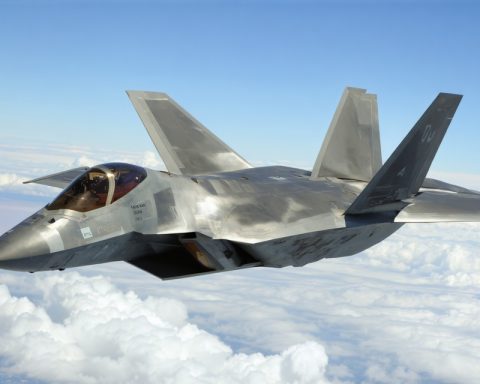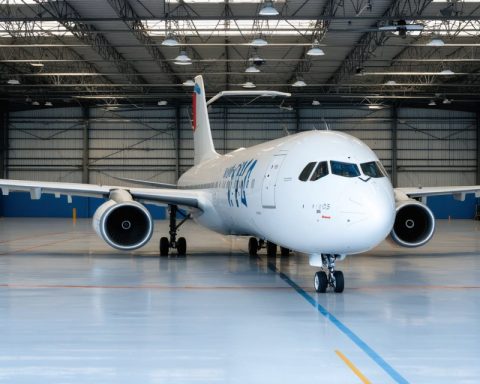The Battle for Thailand’s Next Fighter Jet
As Thailand intensifies its search for a new fighter jet, the spotlight turns to the ongoing competition between Lockheed Martin’s F-16 and SAAB’s Gripen E/F. The Royal Thai Air Force (RTAF) is particularly focused on operational versatility, especially the ability to land on highways, which could significantly influence their decision.
Analysts highlight that the Gripen E/F’s established capability to operate from non-traditional airstrips gives it a competitive edge over the F-16. In fact, a specific highway segment has been set aside for critical flight tests on February 25, which will showcase this important feature. Despite potential challenges posed by the limited runway length, expectations are high for the Gripen’s performance.
Given the backdrop of rising global tensions, the ability to utilize diverse landing sites is not just a strategic advantage; it is a necessity. This operational flexibility reduces vulnerability and ensures preparedness across various terrains, aligning perfectly with the RTAF’s strategic goals.
In weighing their options, the RTAF considers factors like cost-effectiveness and the advanced technology of the Gripen, which facilitates a broader range of missions. With the upcoming tests set to play a pivotal role in the decision-making process, the stakes are high for both aircraft. The choice made by Thailand could resonate through the global defense landscape, influencing future fighter jet acquisitions and military strategies worldwide.
The Broader Implications of Thailand’s Fighter Jet Decision
As Thailand contemplates its next fighter jet acquisition, the implications of this choice reverberate far beyond its borders. The decision to opt for either the F-16 or Gripen E/F is emblematic of the shifting dynamics within the global defense landscape. With regional security concerns intensifying in Southeast Asia, Thailand’s move could trigger broader arms competition, prompting neighboring nations to bolster their military capabilities. This demonstrates how local decisions can have significant repercussions in the geopolitical arena.
Moreover, the focus on operational versatility, particularly the ability to use highways for landings, highlights a crucial trend in military aviation. Nations increasingly recognize the need for flexibility and adaptability, especially in contested environments. This trend could inspire further innovations in aircraft design and capabilities, as nations push to enhance their operational readiness in diverse terrains.
From an environmental standpoint, the implications of enhancing the military’s air mobility through highway use cannot be overlooked. Increased military operations may lead to higher carbon emissions and environmental degradation, demanding that future decisions consider sustainability alongside operational efficacy.
Ultimately, Thailand’s decision serves as a precursor to how military strategies may evolve globally. As countries reassess their defense priorities amid rising tensions, Thailand’s choice could illuminate pathways toward more integrated military cooperation or, conversely, escalating arms races in the region. This decision thus carries long-term significance for both regional stability and the global defense community.
Thailand’s Fighter Jet Decision: A Game-Changer for Air Power
The Battle for Thailand’s Next Fighter Jet
Thailand is entering a significant phase in its search for a new fighter jet, with a spotlight on the competition between Lockheed Martin’s F-16 and SAAB’s Gripen E/F. The Royal Thai Air Force (RTAF) is particularly intrigued by operational versatility, especially the strategic capability for military aircraft to land on highways. This ability could be a crucial factor in Thailand’s decision-making process.
Features of Interest
The Gripen E/F’s proven adaptability to operate from non-traditional airstrips is seen as a notable advantage over the F-16. The RTAF will conduct critical flight tests on February 25 to evaluate this capability, further solidifying its potential operational benefits. Operating from highways not only enhances tactical flexibility but also minimizes the risk of being targeted at conventional airbases.
Pros and Cons of Each Fighter
Gripen E/F:
– Pros:
– Ability to operate from short and non-traditional runways.
– Advanced technology for multi-role missions.
– Typically more cost-effective in operational costs.
– Cons:
– May have limitations in terms of payload compared to larger aircraft.
– Requires adequate support infrastructure for non-traditional operations.
F-16:
– Pros:
– Established combat record and extensive user experience.
– Greater payload capacity and larger global logistics network.
– Cons:
– Less flexible in terms of landing options compared to Gripen.
– Operational costs can be higher due to maintenance and parts.
Market Trends and Insights
The global defense landscape is evolving amid rising geopolitical tensions, making versatile and adaptable platforms more appealing. Military forces around the world are increasingly considering aircraft that can operate in diverse environments without relying solely on traditional airbases. This trend is reflected in the RTAF’s focus on highway landings.
Innovations and Security Aspects
The operational innovations offered by the Gripen E/F can enhance security and resilience for air operations. In a scenario where conventional bases are compromised, having the capability to land on highways offers a significant tactical advantage. This strategic flexibility forms a key part of modern military doctrine, prioritizing survivability and multi-domain operations.
Predictions for Future Military Strategies
The decision made by Thailand regarding its next fighter jet could have ripple effects throughout the Southeast Asian defense market and beyond. As nations reassess their air capabilities, Thailand’s choice may set a precedent for future acquisitions, influencing fighter jet specifications globally and shaping military alliances in the region.
Conclusion
The RTAF’s eventual choice between the F-16 and Gripen E/F will not only impact Thailand’s air force capabilities but could also reverberate through the international defense community. As the February flight tests approach, the anticipation builds for what this decision will mean for Thailand and how it will align with broader military trends.
For more insights on military aviation and defense options, visit Defense News.







